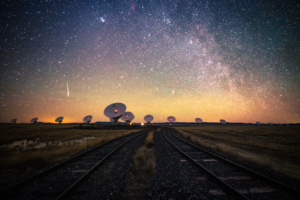The U.S. National Science Foundation National Radio Astronomy Observatory (NSF NRAO) has entered into a groundbreaking partnership with the NSF Leadership-Class Computing Facility (NSF LFFC), led by the Texas Advanced Computing Center, to pioneer a transformative data processing system for the next era of radio astronomy.
The partnership is in direct response to the astronomical data volumes anticipated from the upcoming Next Generation Very Large Array (ngVLA) project, which is expected to produce up to 40 petabytes (PB) of data each month—orders of magnitude greater than any of the current NRAO telescopes. . This scale will place NRAO at the forefront of data-intensive scientific exploration not just in astronomy, but across the broader scientific community.











